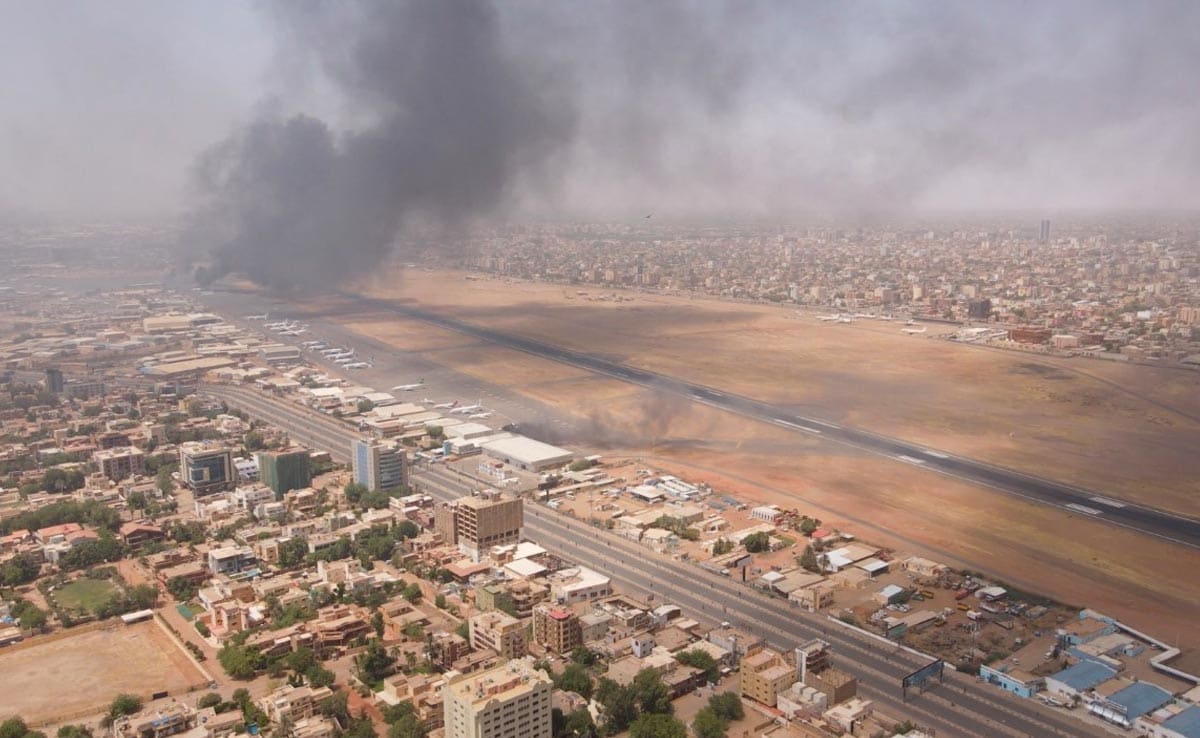Sudan Crisis: fierce clashes between the Sudanese Armed Forces (SAF) and the Rapid Support Forces (RSF) under Mohamed Hamdan Daglo have been locked in a power struggle since April 15th.
The war on the streets of the capital city, Khartoum, has rippled into its twin city, Omdurman, as well as other parts of the region, further intensifying the turmoil in Sudan.
According to Abdou Dieng, a United Nations humanitarian official, around 24.7 million people, which is half of the population of the country, are in dire need of humanitarian assistance and protection.
In addition, the World Health Organization (WHO) flags that more than two-thirds of medical facilities are non-functional due to fighting in Sudan. In areas that did not see fighting, facilities are running low on supplies and resources.
Staying and delivering.@UNICEFSudan team distributed sanitation & hygiene supplies in #Madani, as children and families are making their way to safer places in #Sudan
Through staff & partners on the ground, people are accessing critically needed clean water💧#ForEveryChild pic.twitter.com/kIFbLRdfxC
— UNICEF Sudan (@UNICEFSudan) May 25, 2023
Pramila Patten, the UN Special Representative on Sexual Violence in Conflict, raised another grave concern regarding multiple reports of sexual violence against women and girls.
A ceasefire deal was brokered by Saudi Arabia, and the United States called on the warring parties to extend the shaky ceasefire as the days of fighting have reached a deadlock in the capital city and elsewhere in the country.
The ceasefire was designed to secure and facilitate aid delivery; however, it was scheduled to expire on 29th May. Therefore, a joint statement was issued by Saudi Arabia and the United States in a joint statement on 28th May, called for the extension of the ceasefire agreement.
Fragile Truce
Flagging the uncertain violence attached to the truce, the statement reflects that, though “imperfect”, an extension will facilitate urgent humanitarian assistance in the region. In a separate statement, the United States and Saudi Arabia accused both conflicting parties of violating the ceasefire.
“There were violations by both parties that significantly impeded the delivery of humanitarian assistance and the restoration of essential services,” Saudi Arabia and the United States mentioned in a statement.
The ceasefire has led to a lull in violence around the capital city, Khartoum. As the conflict entered its seventh week, fighting continued in several regions, such as Darfur, plunging such places into chaos.
Claimed hundreds of lives, wounded thousands, and pushed the country to the brink of collapse. In addition, it has led to the mass exodus of around 1.4 million people, according to the United Nations migration agency.
Reportedly, airstrikes and seizure of medical supplies by the army, looting, and occupation of residential buildings by the RSF.
Darfur – Sudan Crisis
Troubled by decades of unrest that left thousands dead and awash with weapons. The conflict raged in the western Darfur region, near the border with Chad.
In 2003, during the war in Darfur, former president Omar al-Bashir unleashed the Janjaweed militia to repress a rebellion by a non-Arab ethnic group. The RSF paramilitaries originated from the Janjaweed militia, which was accused of war crimes and crimes against humanity.
Therefore, the current conflict has reignited those communal tensions.
In the event of an escalation in the communal fights, the humanitarian situation will worsen. Due to the very nature of inter-communal fighting, humanitarian corridors are rarely considered.

